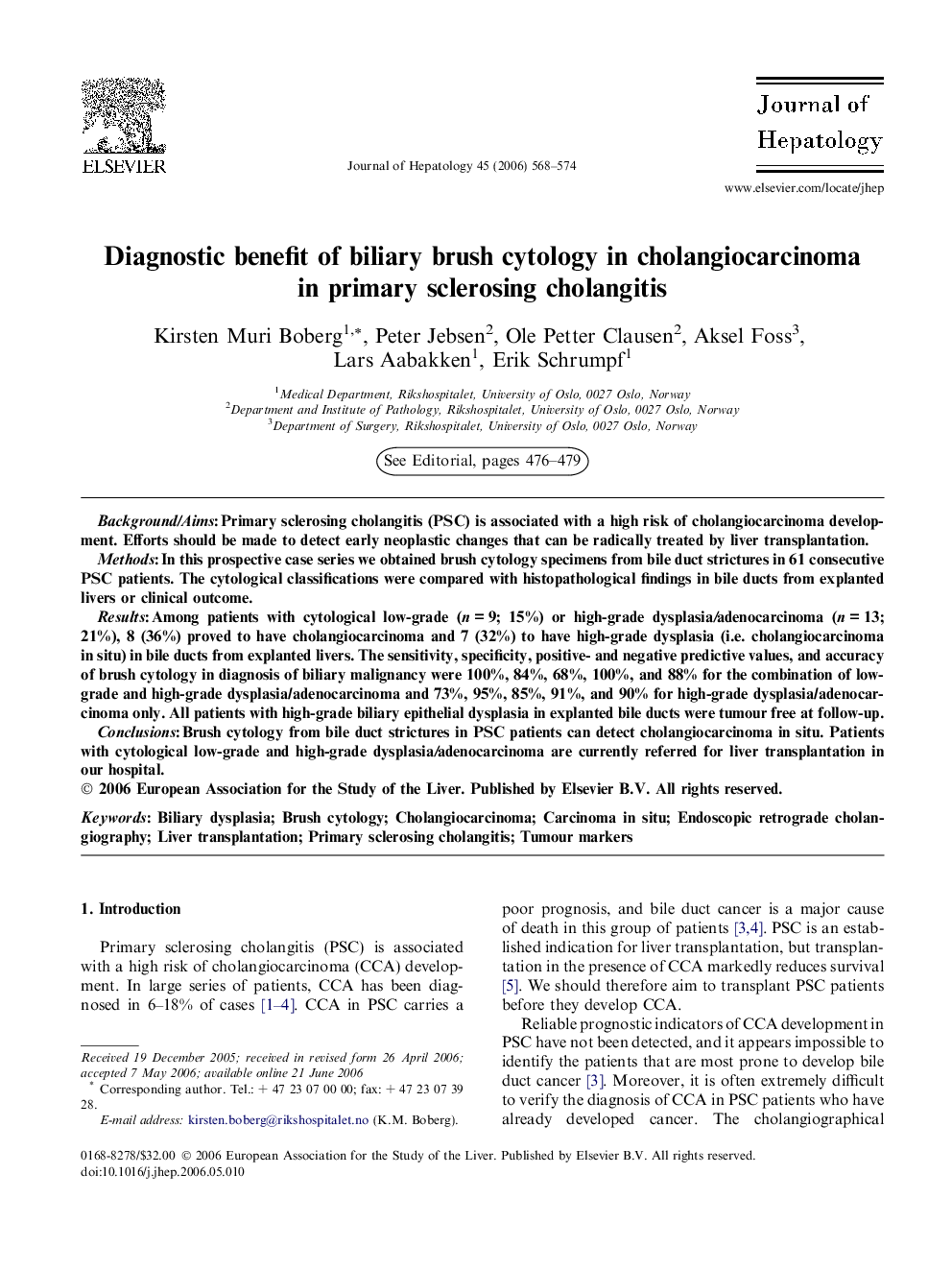| Article ID | Journal | Published Year | Pages | File Type |
|---|---|---|---|---|
| 3314836 | Journal of Hepatology | 2006 | 7 Pages |
Background/AimsPrimary sclerosing cholangitis (PSC) is associated with a high risk of cholangiocarcinoma development. Efforts should be made to detect early neoplastic changes that can be radically treated by liver transplantation.MethodsIn this prospective case series we obtained brush cytology specimens from bile duct strictures in 61 consecutive PSC patients. The cytological classifications were compared with histopathological findings in bile ducts from explanted livers or clinical outcome.ResultsAmong patients with cytological low-grade (n = 9; 15%) or high-grade dysplasia/adenocarcinoma (n = 13; 21%), 8 (36%) proved to have cholangiocarcinoma and 7 (32%) to have high-grade dysplasia (i.e. cholangiocarcinoma in situ) in bile ducts from explanted livers. The sensitivity, specificity, positive- and negative predictive values, and accuracy of brush cytology in diagnosis of biliary malignancy were 100%, 84%, 68%, 100%, and 88% for the combination of low-grade and high-grade dysplasia/adenocarcinoma and 73%, 95%, 85%, 91%, and 90% for high-grade dysplasia/adenocarcinoma only. All patients with high-grade biliary epithelial dysplasia in explanted bile ducts were tumour free at follow-up.ConclusionsBrush cytology from bile duct strictures in PSC patients can detect cholangiocarcinoma in situ. Patients with cytological low-grade and high-grade dysplasia/adenocarcinoma are currently referred for liver transplantation in our hospital.
